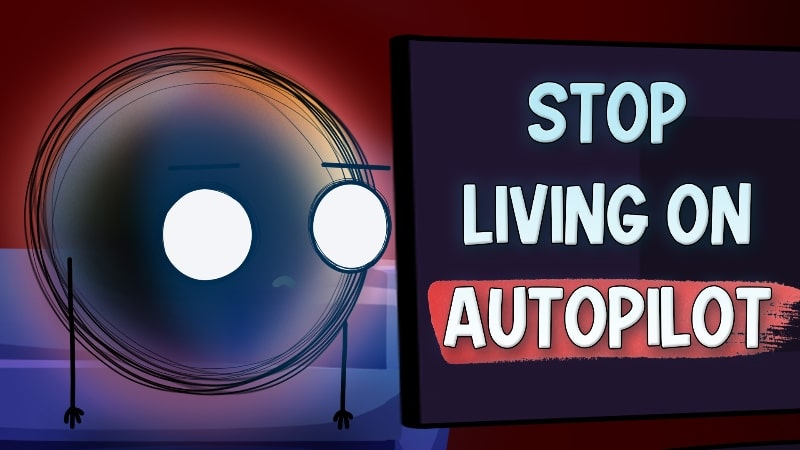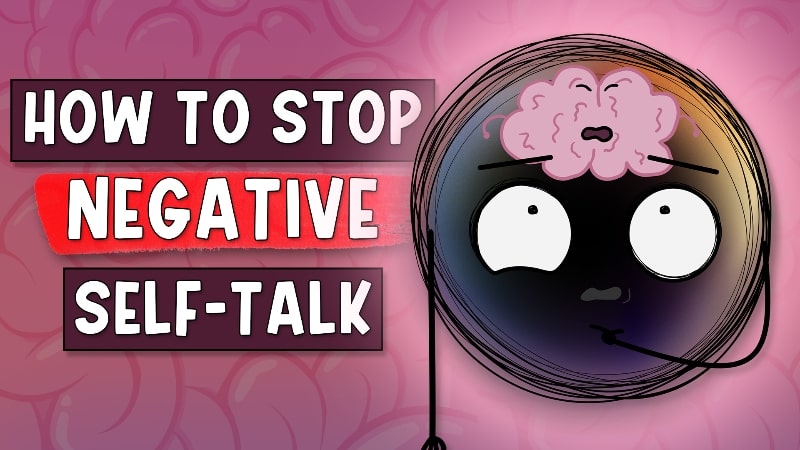It’s the worst moment. That moment when your heart starts racing, you feel a tingling sensation start to creep through your body, and your mind starts spiraling.
Whether you experience general anxiety or full-blown panic attacks, you’re not alone.
We all experience anxiety from time to time. It’s just your brain’s natural response to uncertainty.
A little bit can even be helpful sometimes – like giving you an adrenaline boost before a big presentation. But other times, it can be utterly debilitating, trapping us inside a cage of our own distress.
It hijacks your mind and makes even simple, everyday situations feel intensely stressful and overwhelming.
Maybe you’ve had nights where you lie awake for hours with your mind spinning in relentless worry about something that may or may not happen. Or you’ve had to abruptly leave social situations because your anxiety became so unbearable.
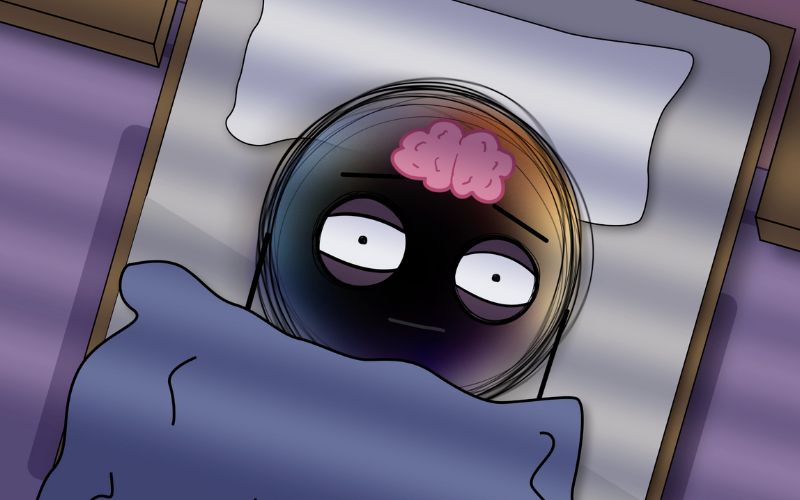
Feeling held hostage by your own mind sucks, but I’ve got a 4-step trick to help you learn how to calm down anxiety that is a serious game-changer.
This post may contain affiliate links from our partners and we may receive a commission if you purchase through these links. This helps support our channel at no additional cost to you. We appreciate your support! 🫶🏼
What is Anxiety?
At its core, anxiety is your body’s natural response to stress, danger or uncertainty. It’s a biological reaction that’s hardwired into humans as a survival mechanism.
In moderation, anxiety can actually be helpful – giving you an adrenaline boost when you need to be alert or focused. Getting a case of the butterflies before giving a big presentation or feeling a surge of nerves ahead of an important event is normal.
The problems start when anxiety becomes excessive or chronic, outweighing the situation at hand. Your brain’s threat detection system essentially gets stuck in overdrive, making you hyper-aware of potential risks no matter how unlikely they are.
This state of heightened anxiety makes it difficult to think clearly or rationally.
Physical symptoms like muscle tension, racing heart, dizziness, and nausea frequently co-occur as part of the body’s stress response. Over time, persistent anxiety takes a serious toll both mentally and physically.
For many, anxiety manifests in persistent worry, nervousness, and unease that can be largely internalized and difficult for others to detect.
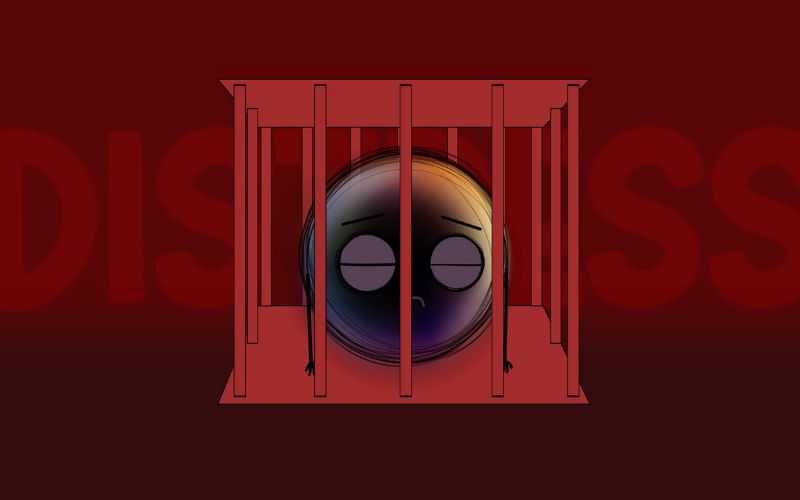
But for others, anxiety expresses itself through full-blown anxiety attacks – a terrifying experience with intense physical and cognitive symptoms.
When Anxious Thoughts Turn Into a Panic Attack
During an anxiety attack, you may experience:
- Rapid heartbeat
- Shortness of breath/choking sensation
- Dizziness or lightheadedness
- Trembling or shaking
- Excessive sweating
- Nausea or abdominal distress
- Feelings of detachment or unreality
- Intense fear of losing control or dying
These alarming symptoms can seemingly arise from nowhere, striking at work, at school, in social situations, or even just relaxing at home.
The experience is so incapacitating that over a third of those who suffer anxiety attacks develop agoraphobia – avoiding places or situations where a panic attack may occur or escape would be difficult.
While anxiety attacks are not permanently dangerous, they can truly feel like a mental and physical crisis in the moment.
Living under the constant threat of when the next one could hit is mentally and emotionally exhausting.
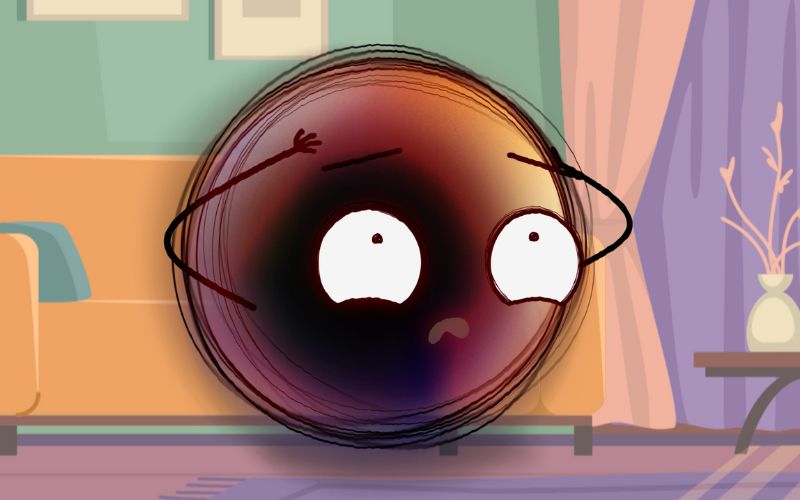
Anxiety Is Common
While anxiety can feel incredibly isolating when it strikes, the truth is you are far from alone in this struggle with your mental health.
According to the Anxiety & Depression Association of America, anxiety disorders are the most common mental illness in the U.S., affecting over 40 million adults age 18 and older every year.
That means that over 19% of the population suffers from disorders like generalized anxiety disorder, social anxiety disorder, panic disorder, and various phobia-related disorders.
Anxiety is an equal opportunity condition, affecting people of all ages, genders, races, and socioeconomic backgrounds.
To Manage Anxiety is to Understand Anxiety
The first step in learning how to calm anxiety is to understand it: where it comes from and how it impacts our mental health.
In his book, DARE: The New Way to End Anxiety and Stop Panic Attacks, Barry McDonagh describes the natural state of life and happiness as a river.
Without anxiety, we’re present, we’re in the flow, and we’re cruising on by in life.
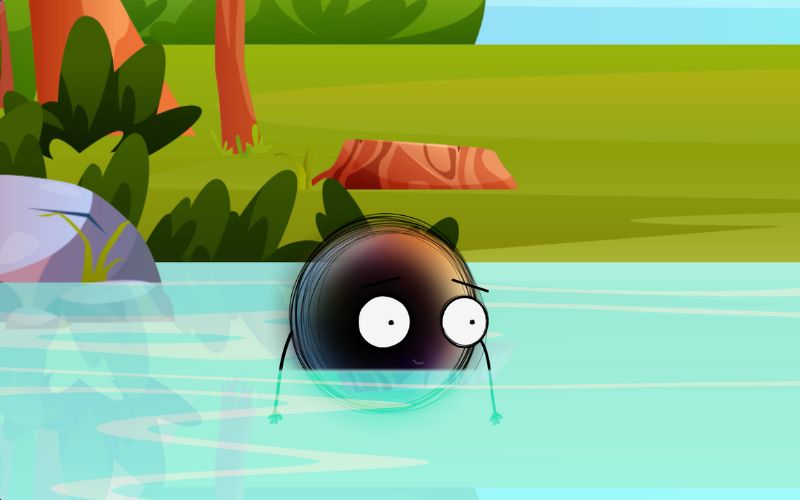
But then comes the trigger.
This trigger can be obvious, like a major life stress or traumatic event. But it can also sneak up stealthily from subtler sources like lack of sleep, poor diet, chronic worrying, or accumulated life struggles.
Anxiety creeps in, we’re flooded with stress hormones, and our first response is to resist.
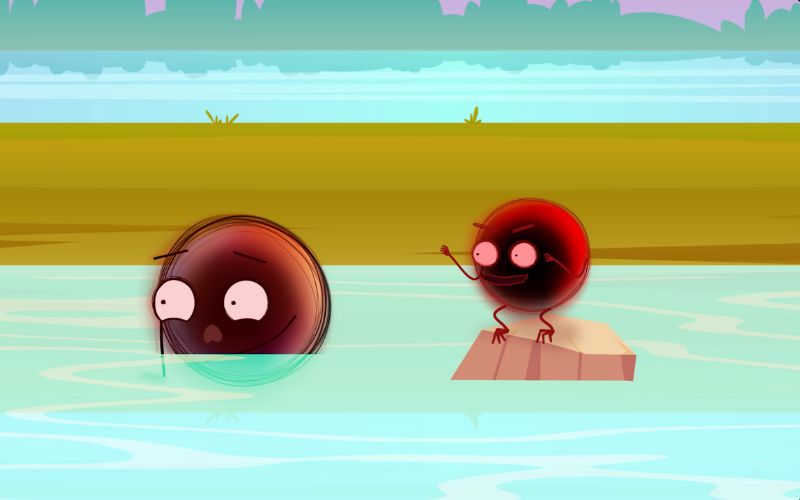
Our brains don’t like uncomfortable experiences like fear and anxiety, so we try to run away or block them out. Goodbye, peaceful flow.
Making Anxiety Worse
But ironically, when you fight anxiety, you only create more inner turmoil and strengthen its grip on you. It’s like throwing gasoline on a fire.
The more you resist and fight against anxious sensations, the more overwhelming they become in a brutal cycle of escalating anxiety.
This cycle can be hard to break and most people tend to accept this as a part of their lives, but it doesn’t have to be.
How to Calm Anxiety: The DARE Response
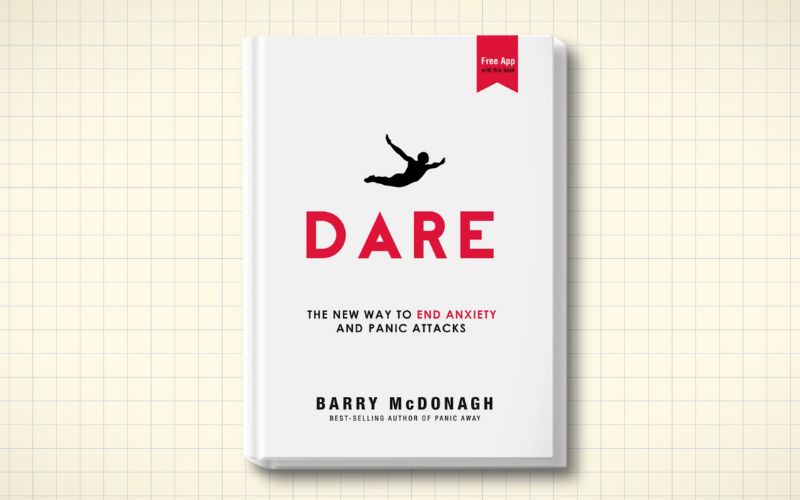
Barry McDonagh actually states that the goal is to not just reduce anxiety, but to CURE it.
“The greatest obstacle to healing your anxiety is you. You’re the cure.”
Barry used to suffer from crippling anxiety and panic attacks himself, starting when he was 18 years old. Since then, he has helped out thousands of people around the world to rewire their brain’s response to anxiety with an approach he calls the DARE Response.
Using the DARE Response, you can learn how to accept and float through anxious feelings, rather than struggle against them.
It’s all about leaning into the experience with a stance of confidence and calm.
Here’s how it works:
1. Defuse
The first step in the genius DARE method is to defuse the anxiety as it arises by acknowledging the anxiety without judgment.
When anxiety hits, we tend to spiral down in thoughts of “What If’s” that always have a terrible and tragic ending for us.
When those thoughts arise, try answering them with a big fat, “So what!”
“What if I fail as a parent and I screw up my child’s life!?”
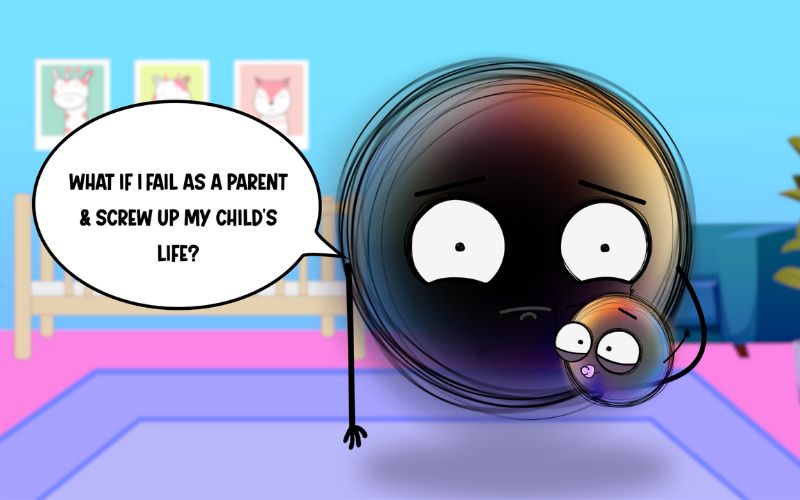
– “So what! I’m doing the best that I can.”
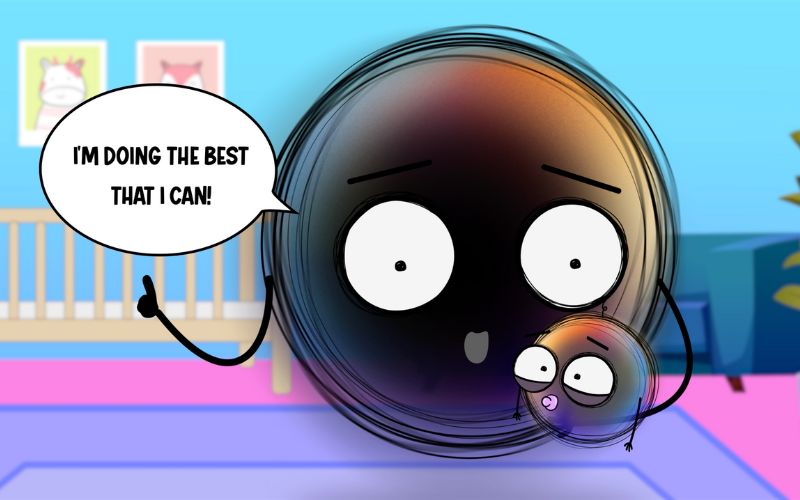
“What if I totally bomb this job interview and never get hired?”
– “So what! I’ll keep looking until I find the right role.”
“What if my partner leaves me because I’m such a mess with this anxiety?”
– “So what! I’ll get through it and be stronger on my own if I have to.”
This simple defusing technique works to immediately disarm and debunk the anxious thoughts from gaining more distressing momentum.
It’s a form of combatting negative self-talk that helps you manage stress by preventing your mind from spiraling out of control over hypothetical situations.
Defusing requires persistent practice, but it’s a critical first step to remove the threat and take an empowered stance from the start.

2. Allow
Once you’ve defused and disarmed the anxious mindset, the next counter-intuitive step is to allow the anxious thoughts and physical feelings to be present.
Rather than fighting, resisting or distracting yourself from negative thoughts, you need to stop struggling altogether.
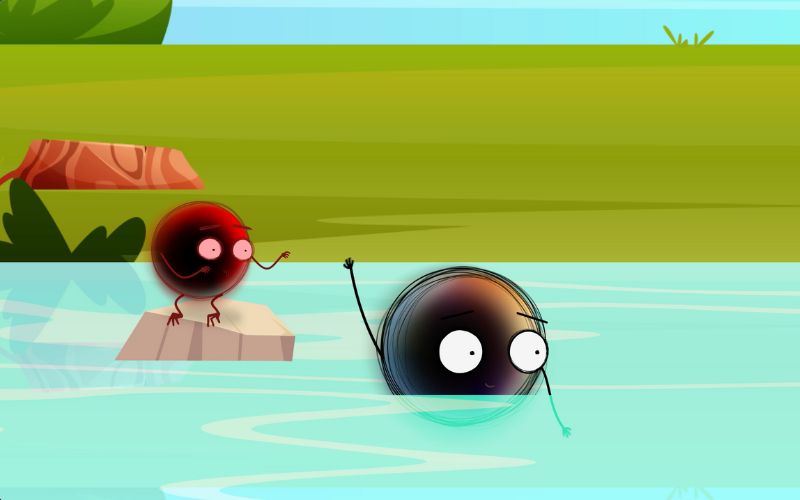
The key to acceptance is knowing that anxiety can’t actually hurt you. It’s just a very uncomfortable series of sensations and thoughts moving through your body.
Just like athletes experience discomfort in their pursuit of greatness, you too will feel discomfort along the way.
Sometimes you just need to ride it out and trust that you’ll get where you need to go in the end.
Barry describes anxiety as a needy friend always demanding your attention and validation. But what happens when you stop indulging that friend’s neediness and complaints?
It gets bored and moves on after not getting the rise or reaction it was seeking.
The same principle applies to anxiety. When you allow and stop fighting the anxious thoughts and feelings, you starve the anxiety cycle of resistance to feed off of.
No longer experiencing opposition, the anxiety symptoms simply run their course and dissipate.
3. Run
The next counterintuitive yet powerful step is to run towards the anxiety, not away from it.
This may sound backwards or even reckless, I get it. But the thing about anxious feelings are that the physical symptoms are remarkably similar to another familiar feeling: excitement.
Think about it – when you’re about to give a big presentation, go on an exhilarating roller coaster, or await important news, you often experience the same bodily sensations: Pounding heart, shaky limbs, butterflies in your stomach.
The key difference is your perspective. With excitement, you view these arousal responses as positive, welcome symptoms of anticipation. You’re ready to run INTO the thrill, not away from it.
When you feel anxiety, you cast the same sensations in a negative light and instantly interpret them as threats you need to avoid or deny at all costs.
But what if you could switch that perspective in the moment?
Sometimes all it takes are a few deep breaths and acknowledgment that “This too shall pass.”
Try to view this as an opportunity for growth and to change your perspective.
Practicing vulnerability can help you become more comfortable in your own skin and start to shift your perspective.
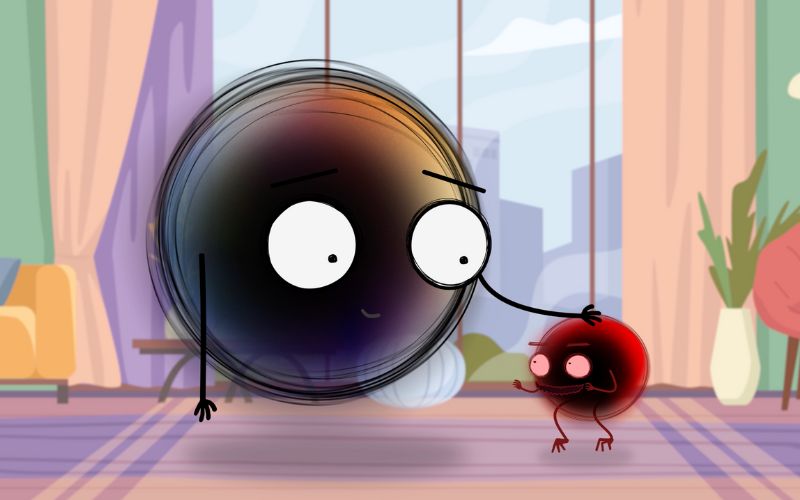
4. Engage
The final step is to actively engage with an activity that will stimulate your mind in a positive way.
When we get hijacked by anxiety, we tend to feel stuck in a constant state of checking in and monitoring the anxiety closely to see what it will do and how it will make us feel.
You become hyper-aware of your racing heart, looking for fluctuations. You fixate on the knot in your stomach, wondering if it will get worse. This persistent check-in only makes your anxiety worse.
Rather than closing inward on our anxious worry streams, we need to purposefully direct our focus outward.
We need to swap out that harmful activity for one that serves us better, like going for a walk, playing a sport, or cooking a good meal.
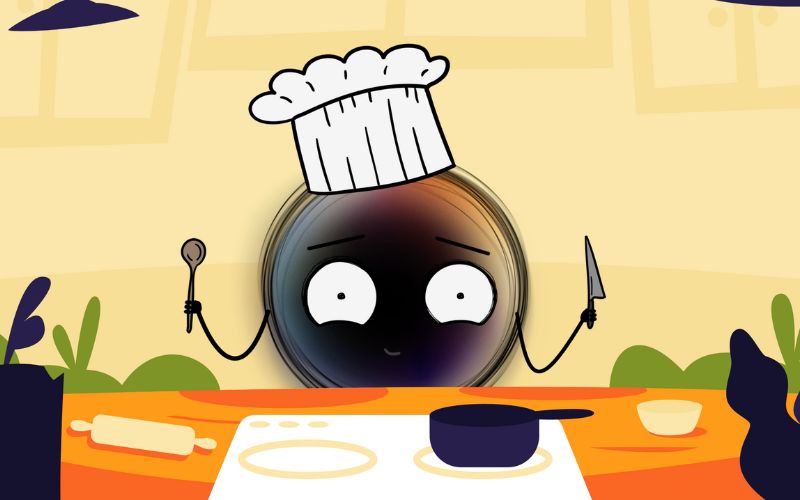
Engage with something that fires up your brain’s cognitive abilities and keeps you anchored in the present. Anything that helps you to stay in that state of flow and keep moving forward.
You’re actively redirecting your neural resources away from anxiety’s closed inward loops toward an open external focus.
This will help you regain your sense of grounded presence and reintegrate into the natural flow of life, rather than being stuck anxiously anticipating future potential threats.
FAQs About How to Calm Anxiety
What is the 333 rule for anxiety?
The 333 rule is a simple anxiety hack to ease feelings of panic or overwhelming stress. When you’re anxious:
- Name 3 things you can see,
- 3 things you can hear,
- and then move 3 parts of your body deliberately.
This grounds you in the present moment using your senses.
How to calm your nerves quickly?
To quickly calm nerves and anxiety, try box breathing:
- Inhale for 4 seconds.
- Hold for 4 seconds.
- Exhale for 4 seconds.
- Hold for 4 seconds.
Repeat this box breathing pattern to instantly relieve symptoms of panic or anxious jitters.
What helps with anxiety?
Some top tips to help with anxiety include exercise, meditation, avoiding alcohol/caffeine, staying hydrated, getting enough sleep, trying CBD or chamomile tea, keeping a journal, and practicing deep breathing exercises. Building resilience through therapy can also provide long-term anxiety relief.
What are the 5 things for anxiety?
A popular technique to calm down from anxiety is to identify:
- 5 things you can see,
- 4 things you can feel,
- 3 things you can hear,
- 2 things you can smell,
- and 1 good thing about yourself.
This grounding exercise engages your senses to shift focus away from anxious thoughts.
Changing Your Relationship with Anxiety
Remember that anxiety is a mental health issue that is super common but also treatable.
Finding a cure starts with understanding and then changing your relationship with anxiety. Instead of seeing it as a threat, you learn to view it as a harmless, and most importantly, temporary experience.
Anxiety doesn’t have to control your life. You can actually use anxiety as a catalyst for personal growth and becoming more grounded in the present moment.
The next time you feel a panic attack coming on, try implementing the DARE Response to clam anxiety. Barry outlines his approach in much greater detail in his book, DARE: The New Way to End Anxiety and Stop Panic Attacks:
- Defuse the situation by acknowledging the anxiety without judgment.
- Allow the anxious thoughts and feelings to be present.
- Run towards the anxiety, not away from it.
- Engage with an activity that will stimulate your mind in a positive way.
Remember that learning how to relieve anxiety is a process. You won’t stop anxiety on the first try with a little extra deep breathing, although that will help.
These calming techniques must be practiced over time whenever you’re feeling anxious. Intense anxiety will take longer to tackle but time and practice will slowly release more and more tension each time.
